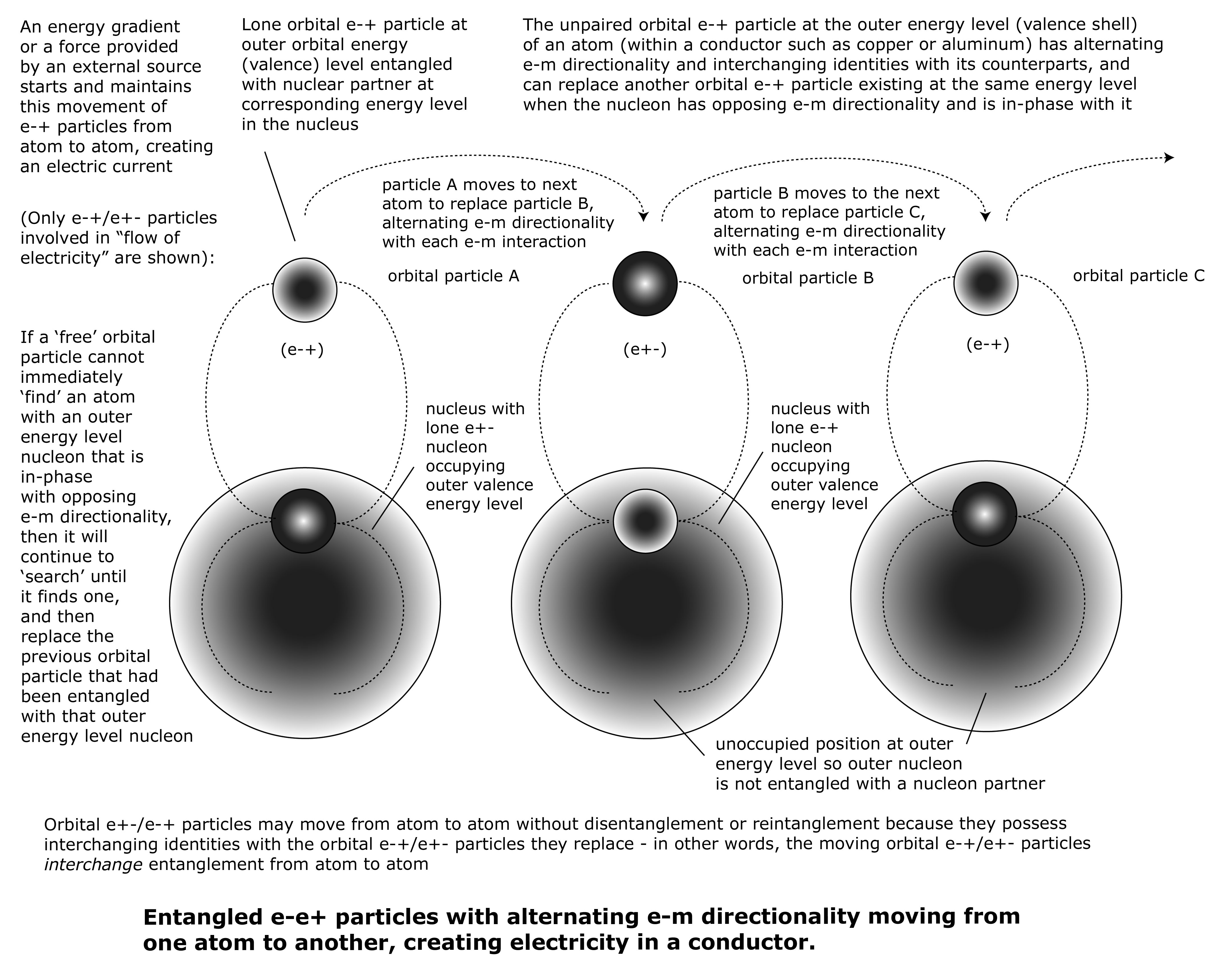 Valence e-+ particles exist in the outer orbital or energy level of an atom. When a valence e-+ particle is the only orbital particle in its energy sub-shell, then it is only entangled with an e+- nucleon partner that exists at a corresponding energy level within the nucleus. That e+- nucleon is also a lone particle in its nuclear energy sub-shell and is only entangled with the orbital e-+ particle. This entanglement is not as strong as entanglements that consist of a pair of orbital e-+ and e+- particles that are entangled with each other and that are each also entangled with e+- and e-+ nucleon partners that occupy a corresponding energy level within the nucleus. As a result, the lone valence e-+ particle that is only entangled with an e+- nucleon partner can ‘leave’ its atomic orbital with less ‘effort’ (i.e., it takes less energy to remove the lone orbital e-+ particle from its orbit about the atomic nucleus).
Valence e-+ particles exist in the outer orbital or energy level of an atom. When a valence e-+ particle is the only orbital particle in its energy sub-shell, then it is only entangled with an e+- nucleon partner that exists at a corresponding energy level within the nucleus. That e+- nucleon is also a lone particle in its nuclear energy sub-shell and is only entangled with the orbital e-+ particle. This entanglement is not as strong as entanglements that consist of a pair of orbital e-+ and e+- particles that are entangled with each other and that are each also entangled with e+- and e-+ nucleon partners that occupy a corresponding energy level within the nucleus. As a result, the lone valence e-+ particle that is only entangled with an e+- nucleon partner can ‘leave’ its atomic orbital with less ‘effort’ (i.e., it takes less energy to remove the lone orbital e-+ particle from its orbit about the atomic nucleus).
Outside energy is applied to a conductor, allowing (or even forcing) unpaired orbital e-+ particles to dislodge from their atoms. The ‘free’ orbital e-+/e+- particles move from atom to atom with in-phase (i.e., in-sync) opposing and alternating e-m directionality, and interchanging identities, with each successive atom, perhaps in a rhythmic motion – so that all moving e-+/e+- particles move together as a unit, each moving from one atom to the next.
A lone valence orbital e-+ particle that possesses alternating e-m directionality and interchanging identities can take the place of another e+- particle in the valence orbital existing at the same energy level in an adjacent atom. The original orbital e-+ particle then leaves its atom to replace another e+- particle at the same energy level in a nearby atom.
Interchanging identities allow the seamless exchange of orbital e-+/e+- particles from one atomic orbital to another without disentanglement and re-entanglement because when the e+-/e-+ particles are in-phase with each other, their ‘new’ entangled nucleons in different atoms cannot tell one from another – so an orbital e-+ particle may move “freely” becoming temporarily entangled with its orbital and nuclear partners in a new atom until the orbital e-+ particle moves on to the next atom.
The movement of e-+/e+- particles from one atom to another (flow of electricity) is driven by some force such as an energy gradient (high energy level to low energy level; high energy density to low energy density; directional imbalance to directional balance) or a force provided by an external source initiating and maintaining this interchange of e+-/e-+ particles from one atom to another.
